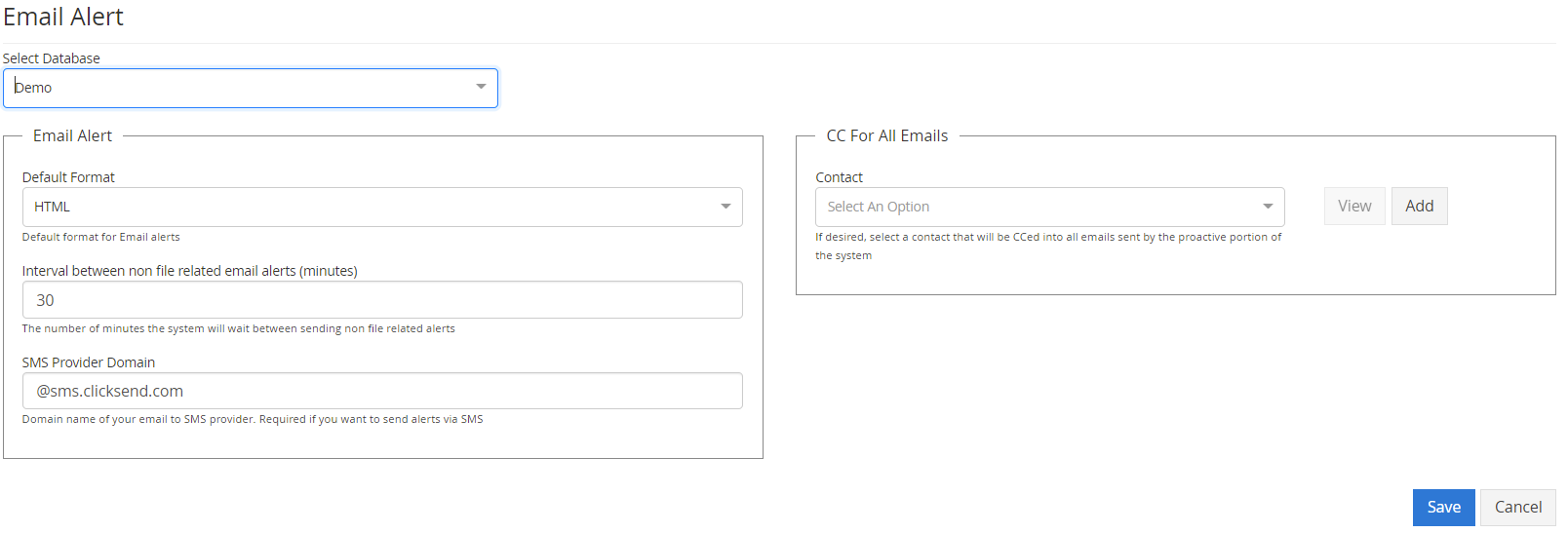How to manage the Advanced Settings in MP-Web
Introduction
Each category of Advanced Settings is laid out on the landing page.

Note
Where a system has multiple databases then users will typically be prompted with a choice of the database before further options can be set. This is because a number of options can be configured different per database.
Mapping
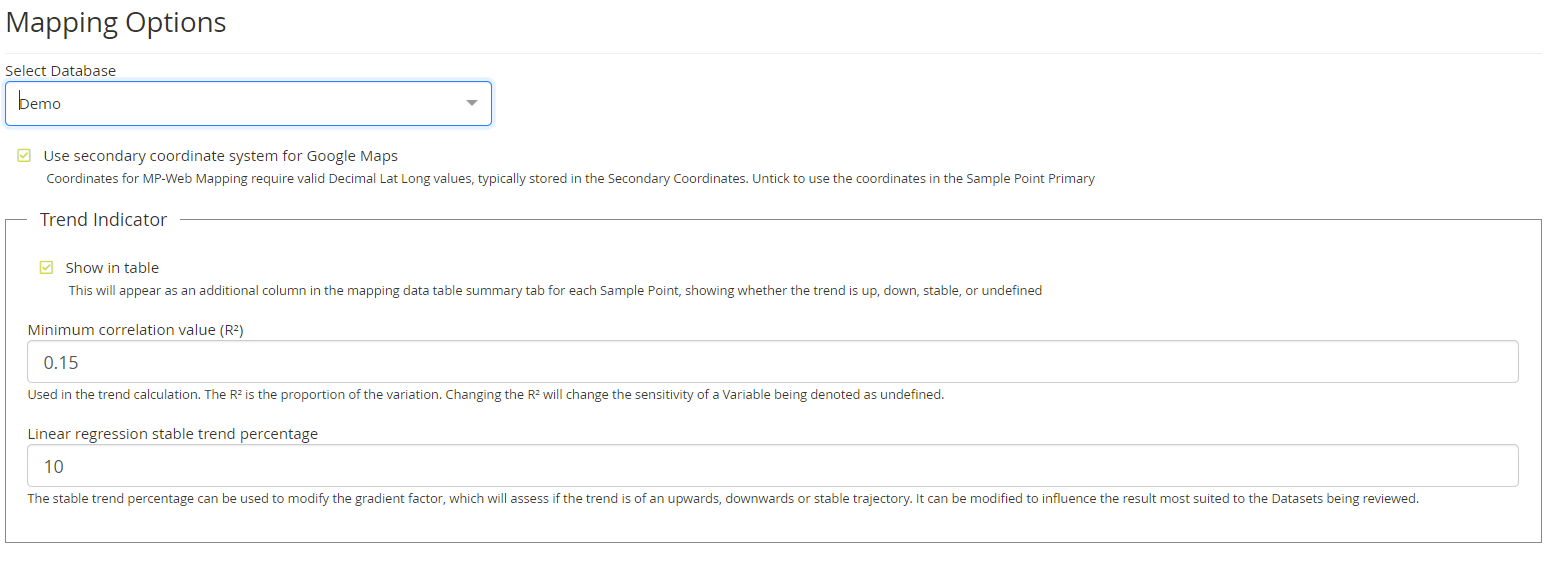
Secondary Coordinates
Typically, databases are set up to have the Latitude and Longitude as the secondary coordinates. This setting enables either to be chosen, for example where databases have been built using only lat/long as the primary.
Trend Indicator
The Trend Indicator is present on the data table of the Mapping. It shows users a representation of whether there is a notable trend present in the Dataset. The factors MonitorPro uses in the trend calculation can be amended by the user to best represent the type of data.
Graphing
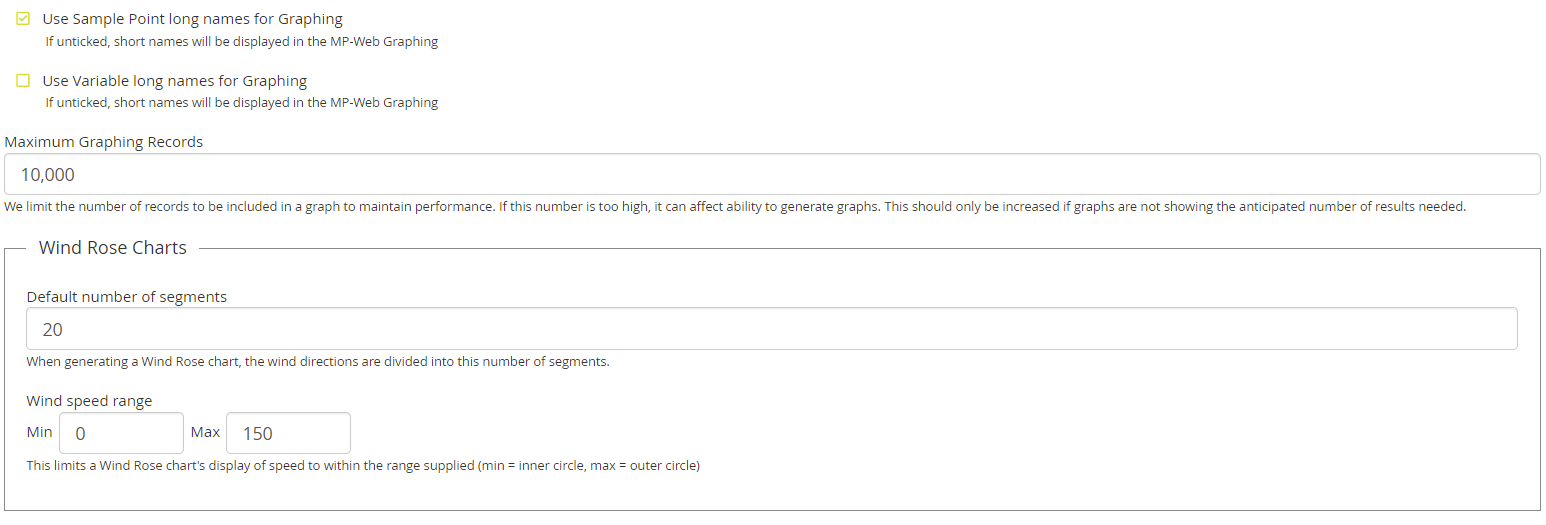
Long Name/Short Name
Option to include the Long Name or Short Name of the Sample Point and Variables in the Graphing.
Max Graphing Records
For performance, the maximum number of records rendered in a single plot can be controlled.
Wind Rose
The Wind Rose settings can be configured when running a plot, however, the default settings can be set here.
Data Entry
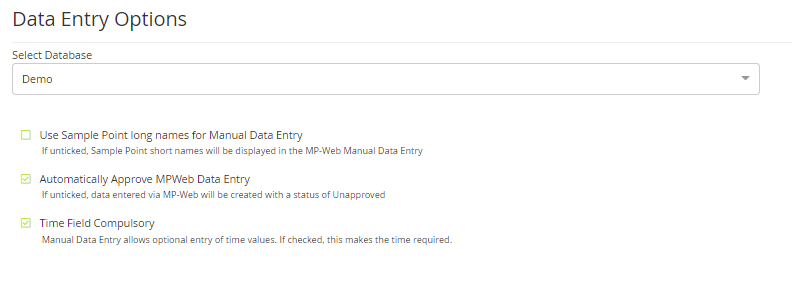
A number of settings can be controlled with regard to the Manual Data Entry. Some of the key settings include.
Long Name/Short Name
Option to include the Long Name or Short Name of the Sample Point.
Automatic Approval
This setting is used if users want any data entered via this route to be set initially as unapproved. Its unlikely users will want to change this setting unless they have a holistic process in place to review and then approve subsequent data imported.
MP-Field

Automatic Approval
This setting is used if users want any data entered via this route to be set initially as unapproved. Its unlikely users will want to change this setting unless they have a holistic process in place to review and then approve subsequent data imported.
Long Name/Short Name
Option to include the Long Name or Short Name of the Sample Point and Variables in MP-Field.
Download Historical Data
This option allows users in MP-Field to view historic data while in the field and offline. There is a small overhead in the size of the download to have this on.
Enable QA/QC
QA/QC allocation is based on the settings in the Monitoring Scheduler. These QA/QC samples are allocated on a random basis to the individual Visits. If users are to be allowed to make modifications to these in the field, then turn this setting on. This will enable users to reallocate QA/QC samples depending on sampling (such as dry or inaccessible locations). It will also allow for additional QA/QC samples to be collected.
Enable AdHoc Sampling
With this option enabled users in the field will be able to add additional sampling and or analysis. This is useful to amend set schedules to include one-off and special samples.
Reports
The report path can be changed from this setting and controls the reports accessible from the Data Analysis Reporting tab. The setting can be per database or global for all databases (where relevant).
Server Reports Location
Users can manage the location where Crystal Reports Folder is stored for use on the Server. This is effectively where reports will run from when automated using Scheduled Tasks or Email Alerts. This can be different to where a user's reports folder is saved or the same if this is on a network or shared drive.

Caution
Note that the account running the MP-Web application must have access to this report path for the site to access them for the users to run.
Object Access
Object Access controls what users can see and covers a number of areas of MonitorPro including Datasets. This access can be set on a Folder basis or on an individual Dataset basis. This option can be toggled from here. See here for more detail on the Object Access setup.
Monitoring Schedule
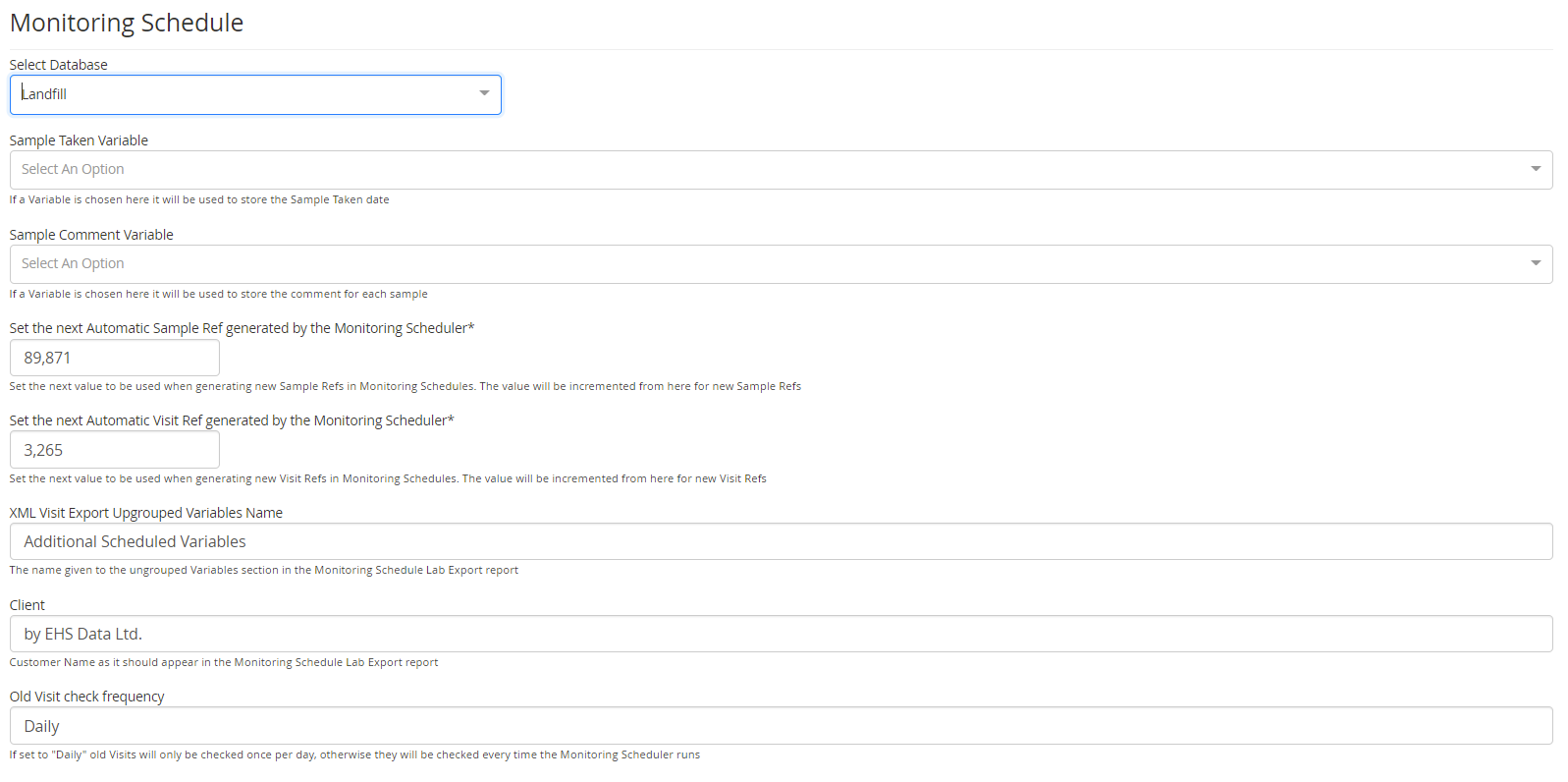
These settings are associated with the Monitoring Scheduler and set how a number of functions operate.
Sample Taken
Along with the Sample Comment, the Sample Taken can be used to update a Visit that a sample has been taken. This setting is mapping to a Variable (one likely needs to be created for this purpose) and can be used to import these settings via an imported file. To update the Sample Taken Status, users need to import against the mapped Variable 'Yes'/'No' or 'Y'/'N' as the value. This data will then be imported as data for later reporting, but will also update the Sample Taken Status in a matching Visit.
Sample Comment
Along with the Sample Taken, the Sample Comment can be used to update a Visit with a Sample Comment. This setting is mapping to a Variable (one likely needs to be created for this purpose) and can be used to import these settings via an imported file. This data will then be imported as data for later reporting, but will also update the Sample Comment in a matching Visit.
Set the Automatic Sample Ref
Monitoring Schedules can be set to auto-create Sample References. This setting can be used to start the Sample Reference count from a set value and set a prefix.
Set the Automatic Visit Ref
Visits are created with auto-created Visit References. This setting can be used to start the Visit Reference count from a set value and set a prefix.
XML Visit Export
The Visit Export is a way to communicate sampling requirements to supported laboratories. This option enables users to name how ungrouped Variables are presented.
Importer
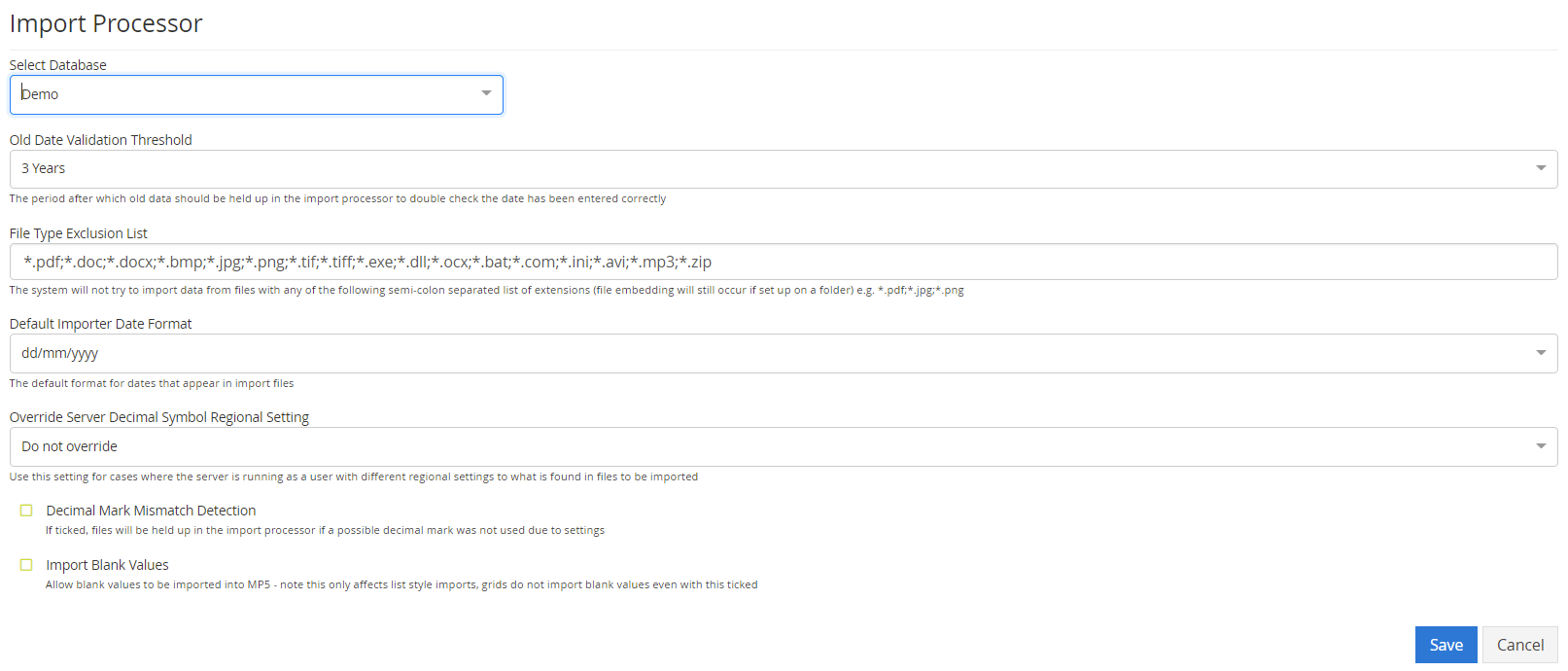
Importer Settings
Old Date Validation
The Old Date Validation is one of the MonitorPro import validation processes. The importer will hold data in the Import Processor when it is older than this setting. For historical imports this can be turned off, to be reset to a more normal check afterwards.
File Type Exclusion
This list of file extensions details those which the Importer will not attempt to import as data. It is prepopulated with a number of common exceptions, which can be added to if required. This is rare but can be a scenario if other files are provided on email with the data file, and MonitorPro strips all the attachments for import (it is however possible to exclude these in the Email Importer Rules).
Note
This does not impact file embedding, only files treated as data files. For embedded files, the extensions to include are managed on each of the Auto Importers under the Embed Files tab.
Default Date
When an importer is set up the date format it expects can be changed to accommodate for regional differences or specific equipment. This setting allows the default to be amended, such as mm/dd/yyyy for US implementations.
Override Server Decimal Symbol
Differing regions use either a '.' or ',' decimal separator for values (1.1 = 1,1). It is strongly recommended that the account which is running the MonitorPro Service is using the expected locale of the data (either '.' or ','), and that the data files are consistent. It is possible though to override this setting when files are not being presented consistently. MonitorPro can then interpret the data using a fixed '.' or ',' setting to overcome any potential mismatches which might occur with the incoming data.
Decimal mark mismatch
Following on from the above, with this setting MonitorPro will attempt to retain in the Import Processor data where it believes the decimal symbol is being presented in the data incorrectly. This only needs to be turned on in implementations where there is potential confusion between a '.' and ',' being present in the data.
Data Edit Comment - By default, any manual edits to a piece of data require a comment. This requirement can be turned off here, however, a history of the change will still be recorded.
Default Less Than Multiplier - The Less Than Multiplier controls how data with a 'less than' is managed. A multiplier of 1 would treat data presented as <1 as 1 for the purposes of calculations and graphs. This setting affects the multiplier set when new Variables are created. It will not change older Variables that may have been set up with an alternative value.
Import Blank Values - Typically blank values do not need to be imported into MonitorPro, but for specific cases when desired it can be facilitated using this setting. Some cases are where there is no value itself, however, a comment has been added.
Email Alert
These settings are associated with the Email Alerts and set how a number of functions operate.
Default Format
This enables emails to be sent as HTML or plain text.
Email Alert Interval
Typically Email Alerts are triggered based on data entry, however where these are not data-driven the interval is set here, with a default of 30mins.
SMS Domain
Where the Email Alerts are set to create SMS the SMS providers domain needs to be correctly set here.
CC for Emails - A email can be configured here to receive all emails generated from the system.
Email Account
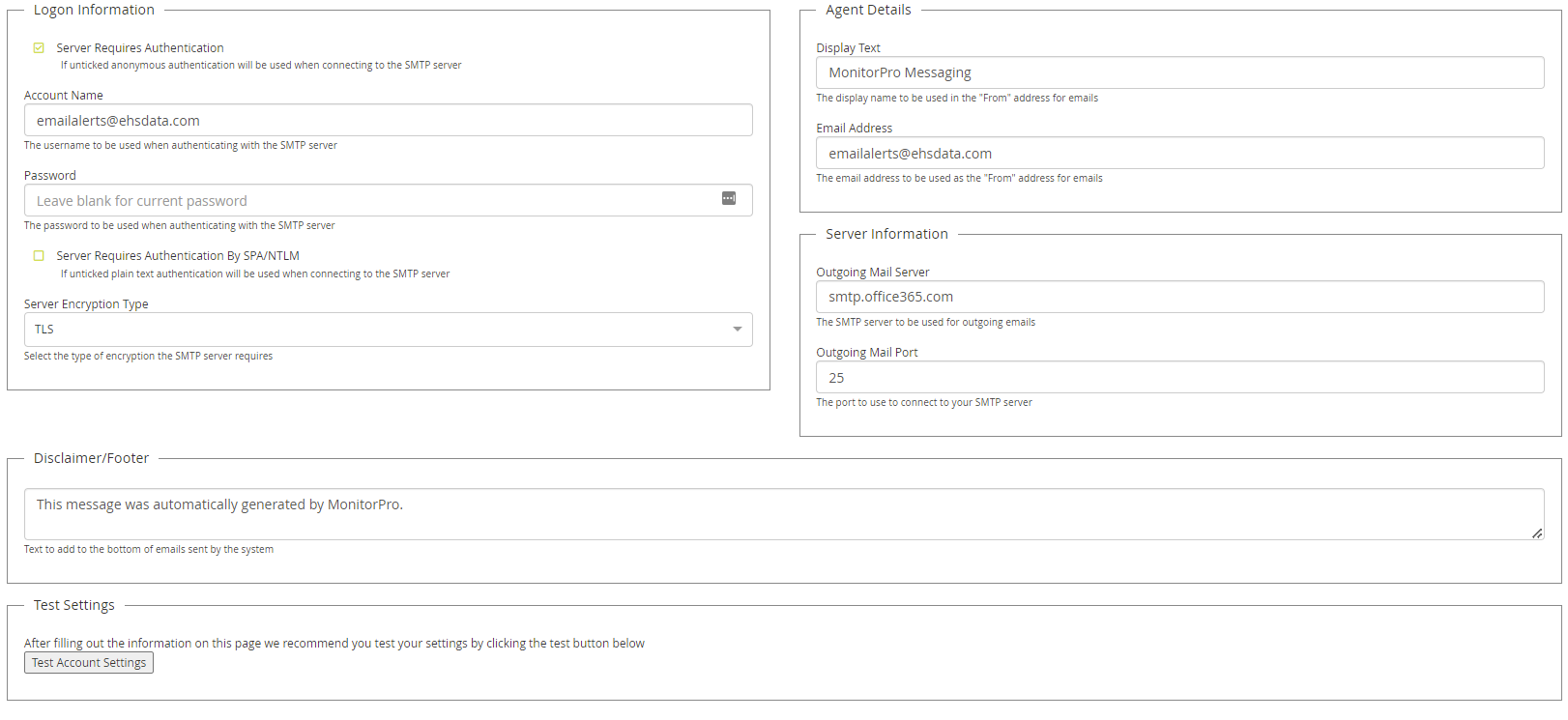
The Email Account settings are used for the outgoing Email Alerts from MonitorPro. These are distinct from the Email Importer settings and are configurable per database. The Test Settings can be used to ensure the settings are correct.
Data

Comments for data editing
By default, any changes made to data by a user will require a comment to be included. This can be turned off here. This does not affect the recording of data histories which will always be recorded.
Objects

Default Less Than Multiplier
The Less Than Multiplier controls how data imported with a less than (<) is treated. This setting controls the default Less Than Multiplier which is applied when new Variables are created.

